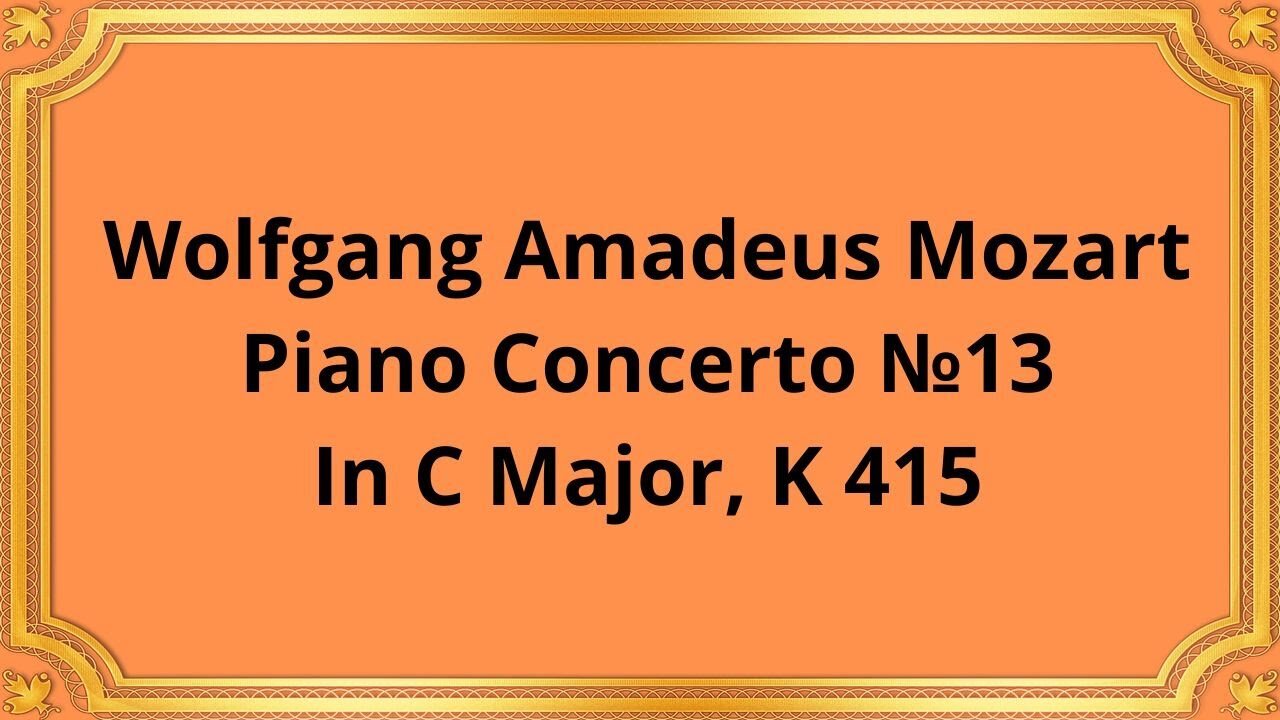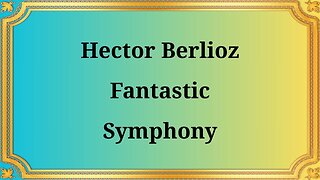Premium Only Content

Wolfgang Amadeus Mozart Piano Concerto №13 In C Major, K 415
#WolfgangAmadeusMozart #PianoConcerto #ClassicalMusic #MusicalComposition #MozartPianoConcerto #CMajor #ClassicalComposer #ClassicalEra #ClassicalPiano #K415
Publication date 1961
PRO MUSICA ORCHESTRA, VIENNA
Ellen Gilberg — Conductor: Paul Walter
Wolfgang Amadeus Mozart, a prolific composer of the classical era, has left an indelible mark on the world of music. One of his remarkable compositions, Piano Concerto No. 13 in C Major, K 415, stands as a testament to his genius.
Composed in 1782, Mozart's Piano Concerto No. 13 reflects the elegance and refinement of the classical era. Mozart was a virtuoso pianist himself, and this concerto was likely written for his own performances. During this time, the piano concerto genre was gaining popularity, providing a platform for composers to showcase their technical prowess and artistic expression.
The concerto follows the traditional three-movement structure: Allegro, Andante, and Allegro. The first movement, marked Allegro, introduces the main themes and establishes the lively and spirited atmosphere. It features a brilliant dialogue between the solo piano and the orchestra, with intricate passages and virtuosic cadenzas.
The second movement, Andante, contrasts the exuberance of the first movement with a serene and introspective character. Here, Mozart demonstrates his mastery in creating beautiful melodies, showcasing the expressive capabilities of the piano. The orchestra provides a delicate accompaniment, creating a harmonious and intimate musical conversation.
The final movement, marked Allegro, brings back the energetic and lively spirit of the concerto. It showcases Mozart's skillful composition techniques, with rapid passages, playful melodies, and moments of brilliant interplay between the piano and the orchestra. The movement culminates in a thrilling finale, leaving the audience in awe of Mozart's musical brilliance.
Piano Concerto No. 13 in C Major is characterized by its melodic richness, intricate harmonies, and technical challenges for both the soloist and the orchestra. Mozart's innovative use of orchestration and his ability to seamlessly integrate the piano and the orchestra make this concerto a true masterpiece.
The concerto also showcases Mozart's exceptional talent for improvisation. In the cadenzas, which are virtuosic solo passages, Mozart provides an opportunity for the pianist to showcase their own improvisational skills, adding a personal touch to each performance.
Conclusion:
Wolfgang Amadeus Mozart's Piano Concerto No. 13 in C Major, K 415, remains a testament to his musical genius and enduring legacy. Its historical significance, exquisite structure, and notable features make it a captivating piece for both performers and audiences alike. Through this concerto, Mozart continues to inspire and delight listeners, reminding us of the timeless beauty and power of classical music.
You have the opportunity to support the channel:
https://destream.net/live/RadSiarAl/donate
https://www.buymeacoffee.com/6355radsiaral
-
 48:22
48:22
Classical music_Music Inspiration
1 month agoHector Berlioz Fantastic Symphony
681 -
 LIVE
LIVE
Inverted World Live
2 hours agoUFO Hits US Military Jet | Ep. 74
3,320 watching -
 2:58:23
2:58:23
TimcastIRL
3 hours agoBiden Pardons WERE FAKE, NYT Report PROVES Trump WAS RIGHT, Fauci Faces Charges | Timcast IRL
193K59 -
 LIVE
LIVE
SpartakusLIVE
4 hours ago#1 Monday MOTIVATOR || Charity Stream Wednesday, The Gauntlet SOON, and 2v2s RETURN?!?!
691 watching -
 8:01
8:01
MattMorseTV
8 hours ago $2.47 earnedTrump just DROPPED a BOMBSHELL.
18.7K31 -
 LIVE
LIVE
This is the Ray Gaming
1 hour ago $0.02 earnedHead Shots and Heart Breaks | Rumble Premium Creator
45 watching -
 LIVE
LIVE
tangodelta
3 hours agoGray Zone Warfare - Lamang Real Estate
55 watching -
 1:34:52
1:34:52
Glenn Greenwald
6 hours agoIs There Evidence of Epstein's Ties to Israel? Yes: Ample. Brazil's Chief Censor Orders Rumble to Ban US Citizen and Turn Over Data | SYSTEM UPDATE #486
117K95 -
 2:08:28
2:08:28
megimu32
2 hours agoOTS: Movies That Scarred Us… and Made Us Scream HELL YEA!
5345 -
 LIVE
LIVE
Lindyrigg87
3 hours agoGentle Lurking... My first time
25 watching